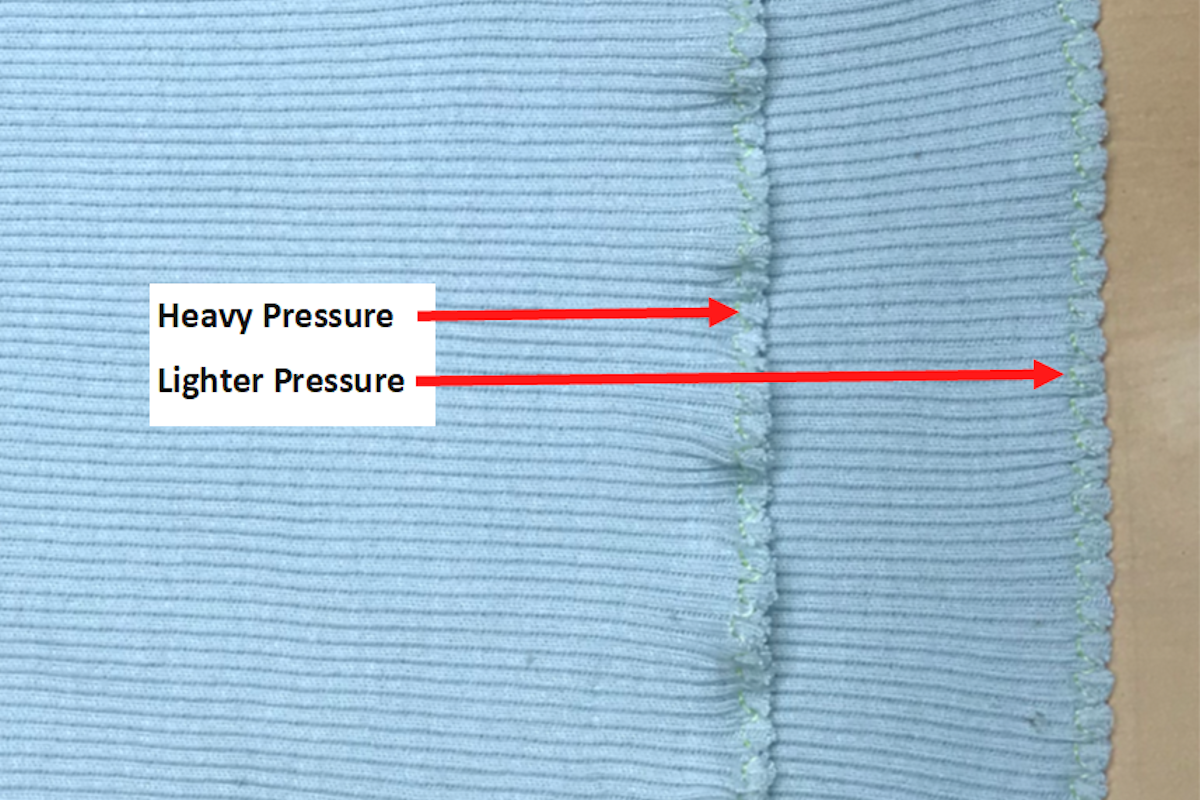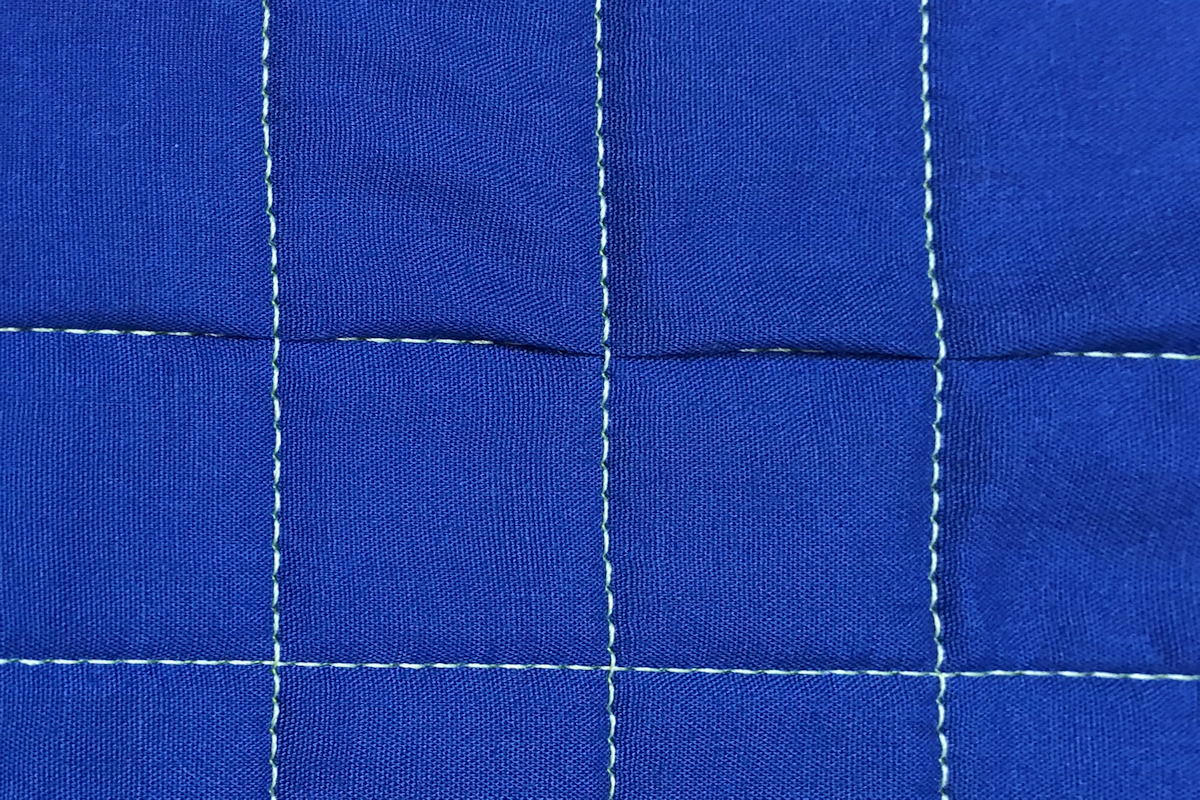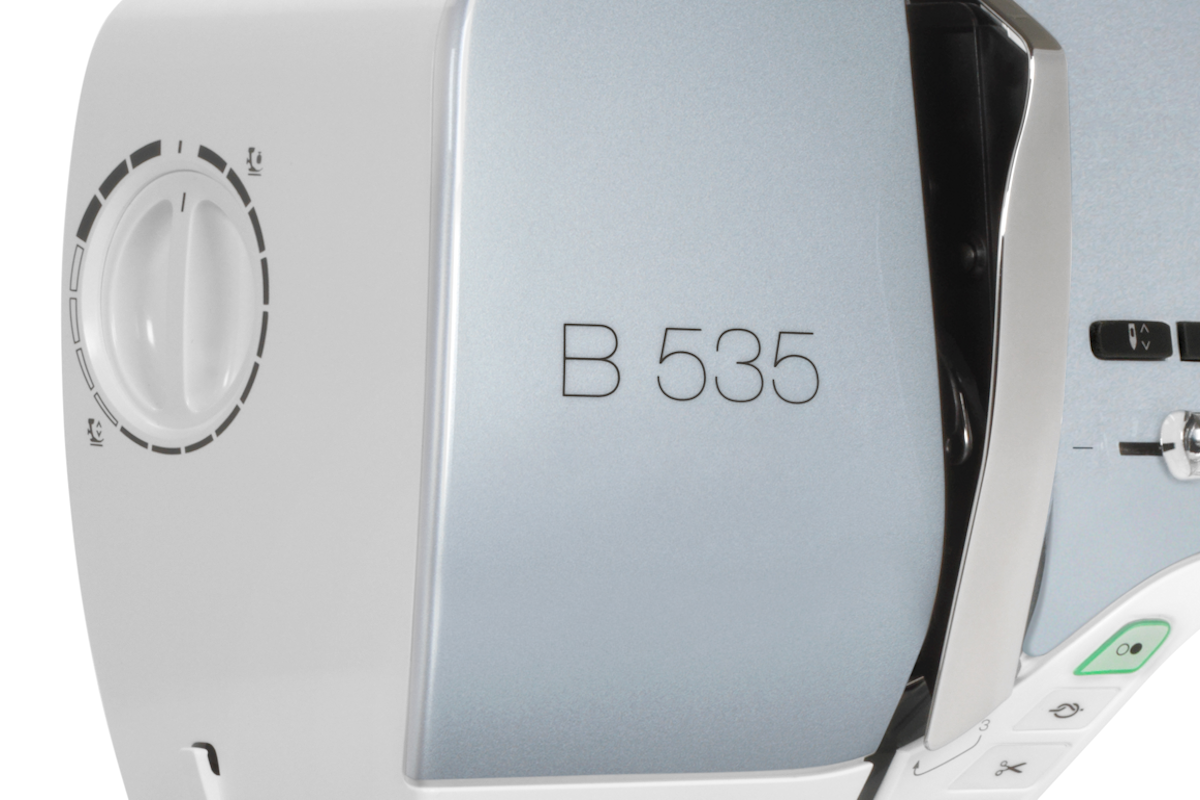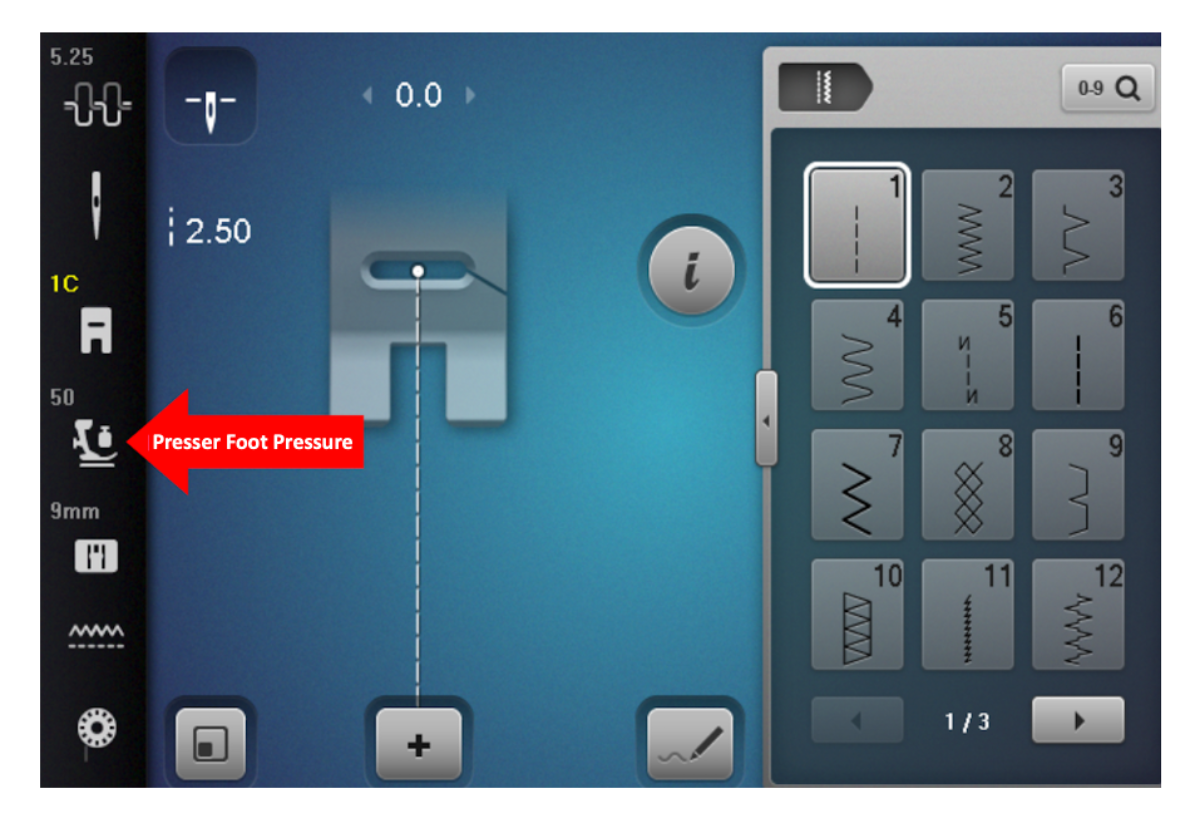Presser foot pressure is exactly what it sounds like – the amount of pressure the lowered foot puts on the fabric. This pressure affects the way the fabric feeds under the foot. If the pressure is too high, the foot “drags”, and the fabric does not feed well. If the pressure is too light, the fabric may slide around and feed crookedly, making it impossible to sew a straight line of stitching. Some machines have a way to adjust the pressure of the presser foot. The benefit of having this adjustment is that you can successfully sew a wide variety of materials from sheer silks and light batiste to heavy wools and thick leathers. This is not a function that you’ll use every day but when you need it, it can make a big difference in your sewing results. Let’s look at a few places where adjusting the pressure of your presser foot is useful.

Knit Fabrics
Sewing knit fabrics is a common situation where pressure adjustment may be needed. The knit fabric below was stitched using an overlock stitch with two different pressure settings. You’ll know that the pressure is too high if the fabric edge is stretched and rippled after you stitch. Decreasing the pressure keeps the foot from holding the fabric back, preventing the fabric from stretching as it moves under the presser foot.

Quilting
Precision is the most important aspect of patchwork piecing. If the fabric doesn’t feed smoothly, it’s difficult to sew a consistent ¼” seam. Decrease the pressure as needed until the fabric lays flat as it goes under the presser foot. If you find you have puckers in your quilts, either on the top or the back, it may be due to the pressure setting. Too much pressure may “push” the fabric, causing tiny folds. Stitching over them results in puckers or pleats. This happens most often when crossing a previously stitched line of quilting. To avoid creating puckers, decrease the pressure adjustment. This is especially useful when making quilts with thick battings.

Adjustment Methods
How you adjust the presser varies from machine to machine. Some machines have a dial, a knob or a slide. You may have numbers (higher to increase pressure and lower to decrease). Or, there may be small to large lines or dots (large to indicate heavier and small for lighter pressure).

Computerized machines with a touch screen often have an on-screen pressure adjustment. When adjusting the pressure on any machine, it is a trial and error process. The fabric, the techniques, and the machines vary so much that there are no specific settings for each situation. You try and test until you get the stitching results you want.


A great explanation for presser foot pressure- thank you! It seems some sites use explanations of thread tension and pressure foot pressure as if they are the same thing.
Hi Amy – Presser Foot Pressure is one of those things that you don’t know you need it unless it is explained to you. Glad this was helpful to you. Thanks!
Susan